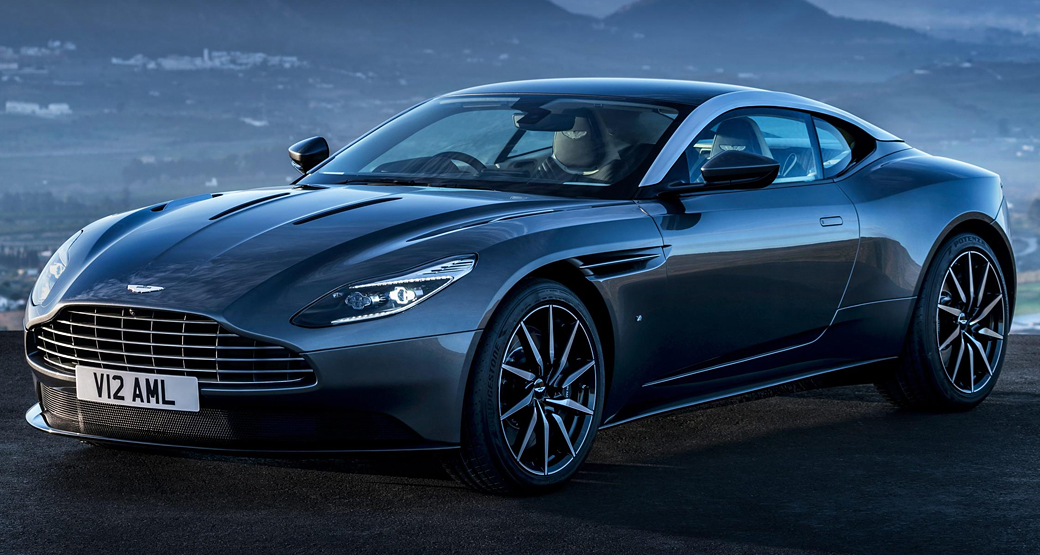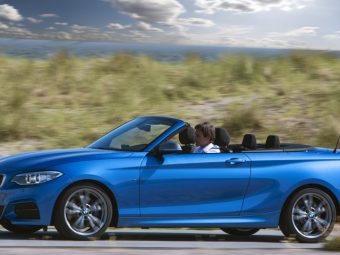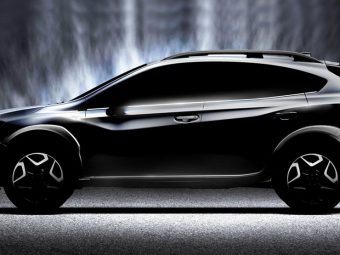By Chris Ward, March 2, 2016
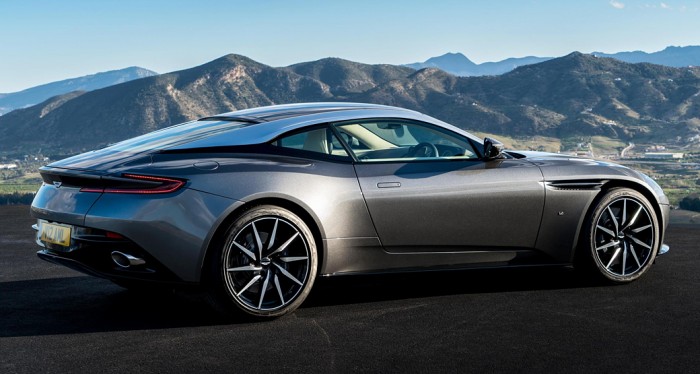 The beating heart of the DB11 is, as expected, a in-housed designed 5.2-litre twin-turbocharged V12 which musters 600bhp and 700Nm of torque, making the DB11 the most powerful production DB model ever.
As you would expect performance figures are very capable. With a top speed of 200mph and a 0-62mph time of just 3.9sec the DB11 is now verging into the hypercar territory.
Unfortunately the DB11 uses stop-start technology which is great for the atmosphere and the polar bears but doesn’t sound right on a Aston Martin.
The beating heart of the DB11 is, as expected, a in-housed designed 5.2-litre twin-turbocharged V12 which musters 600bhp and 700Nm of torque, making the DB11 the most powerful production DB model ever.
As you would expect performance figures are very capable. With a top speed of 200mph and a 0-62mph time of just 3.9sec the DB11 is now verging into the hypercar territory.
Unfortunately the DB11 uses stop-start technology which is great for the atmosphere and the polar bears but doesn’t sound right on a Aston Martin.
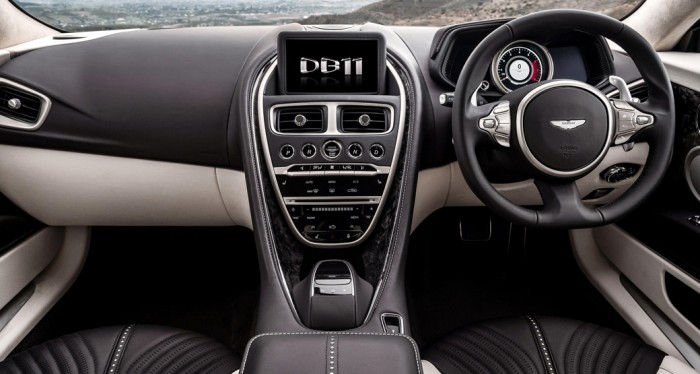 The engine also has cylinder –Variable displacement technology which deactivates a number of cylinders when cruising, its designed to improve fuel economy and lower C02 emissions.
The underlying chassis retains the advance bonded aluminium structure of the DB9 but for the DB11 the process has been greatly refined for improved strength.
In addition the chassis is lighter, stronger, and more space efficient. The DB11’s chassis, suspension, steering and electronics are basically borrowed from Mercedes.
The engine also has cylinder –Variable displacement technology which deactivates a number of cylinders when cruising, its designed to improve fuel economy and lower C02 emissions.
The underlying chassis retains the advance bonded aluminium structure of the DB9 but for the DB11 the process has been greatly refined for improved strength.
In addition the chassis is lighter, stronger, and more space efficient. The DB11’s chassis, suspension, steering and electronics are basically borrowed from Mercedes.
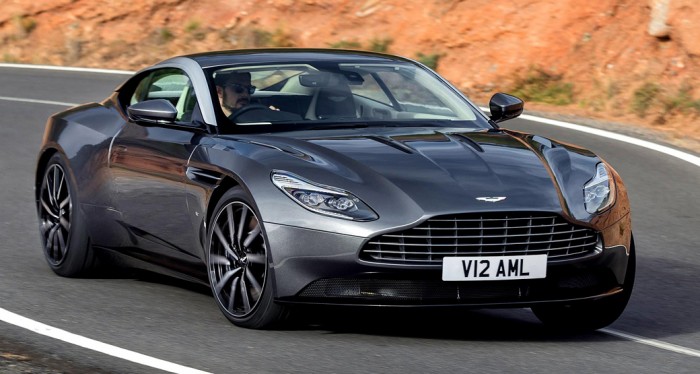 As you may know Aston Martin and Mercedes have a technology and engine partnership and Aston are certainly making the most of this treasure trove.
New technologies now include driver-selectable dynamic modes – GT, Sport and Sport Plus – which progressively intensify the response of the engine.
The 8-speed automatic ZF transmission together with the new electric power steering and Torque Vectoring by braking are designed to increase the firmness of the adaptive damping for a greater agility.
As you may know Aston Martin and Mercedes have a technology and engine partnership and Aston are certainly making the most of this treasure trove.
New technologies now include driver-selectable dynamic modes – GT, Sport and Sport Plus – which progressively intensify the response of the engine.
The 8-speed automatic ZF transmission together with the new electric power steering and Torque Vectoring by braking are designed to increase the firmness of the adaptive damping for a greater agility.
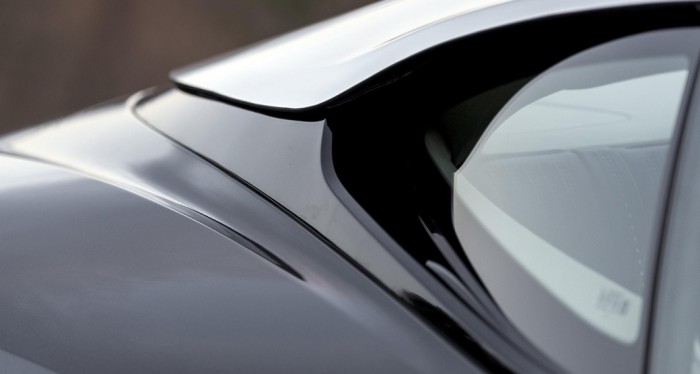 The interior also features a few Mercedes sourced parts, the 8-inch touch screen infotainment system is taken from a C Class. Lined in leather it still looks recognisably ugly just sitting there.
The instrument binnacle now houses a 12” TFT LCD display presenting primary vehicle information in digital and graphical form.
Of course the interior will be luxuriously trimmed and fitted with as many toys as you would expect to get with a luxury supercar.
The interior also features a few Mercedes sourced parts, the 8-inch touch screen infotainment system is taken from a C Class. Lined in leather it still looks recognisably ugly just sitting there.
The instrument binnacle now houses a 12” TFT LCD display presenting primary vehicle information in digital and graphical form.
Of course the interior will be luxuriously trimmed and fitted with as many toys as you would expect to get with a luxury supercar.
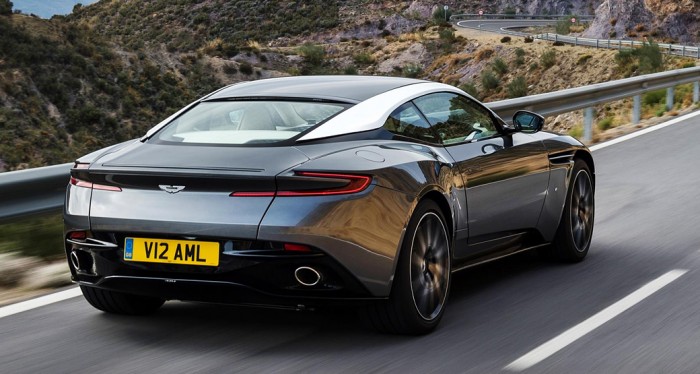 Perhaps the most innovative feature on the DB11 is the “aerodynamic management” of the air flow. Front-end lift is reduced by the gill-like Curlicue which releases high-pressure air from inside the wheel arch via a concealed vent within the redesigned side-strake.
At the same time rear-end lift is reduced by the Aston Martin AeroBlade a virtual spoiler fed by discreet air intakes located at the base of each C-pillar. Air is ducted through the bodywork, before venting as a jet of air from the aperture in the rear decklid. In layman’s term the escaping air acts like a rear wing.
And thats the issue we have with the DB11, to accommodate the tricky aerodynamic solution Aston have sacrificed the rear end styling. Sorry to say this but the rear end of the DB11 doesn’t work, it looks awkward and out of place with the rest of the car’s styling.
In conclusion we like 90 percent of the DB11 and we are sure it will be one of the best driving Aston Martins ever made. But that rear end styling is at odds with Aston’s entire design history.
The DB11 is on sale now, first deliveries are expected to arrive by Q4 2016 and British punters can expect to pay £154,900 GBP.
Perhaps the most innovative feature on the DB11 is the “aerodynamic management” of the air flow. Front-end lift is reduced by the gill-like Curlicue which releases high-pressure air from inside the wheel arch via a concealed vent within the redesigned side-strake.
At the same time rear-end lift is reduced by the Aston Martin AeroBlade a virtual spoiler fed by discreet air intakes located at the base of each C-pillar. Air is ducted through the bodywork, before venting as a jet of air from the aperture in the rear decklid. In layman’s term the escaping air acts like a rear wing.
And thats the issue we have with the DB11, to accommodate the tricky aerodynamic solution Aston have sacrificed the rear end styling. Sorry to say this but the rear end of the DB11 doesn’t work, it looks awkward and out of place with the rest of the car’s styling.
In conclusion we like 90 percent of the DB11 and we are sure it will be one of the best driving Aston Martins ever made. But that rear end styling is at odds with Aston’s entire design history.
The DB11 is on sale now, first deliveries are expected to arrive by Q4 2016 and British punters can expect to pay £154,900 GBP.
